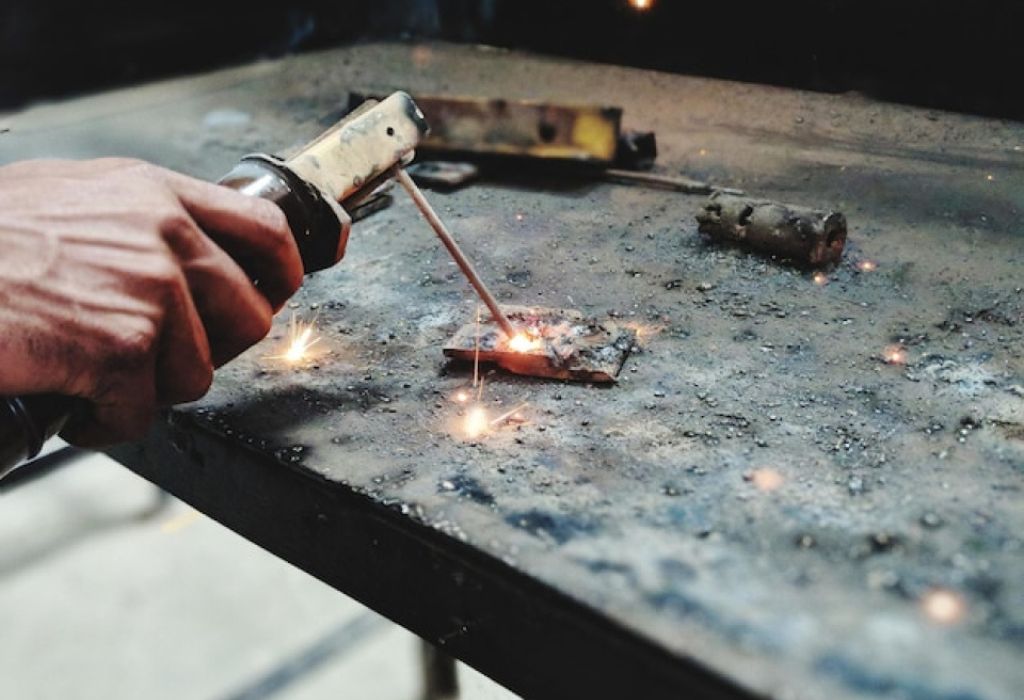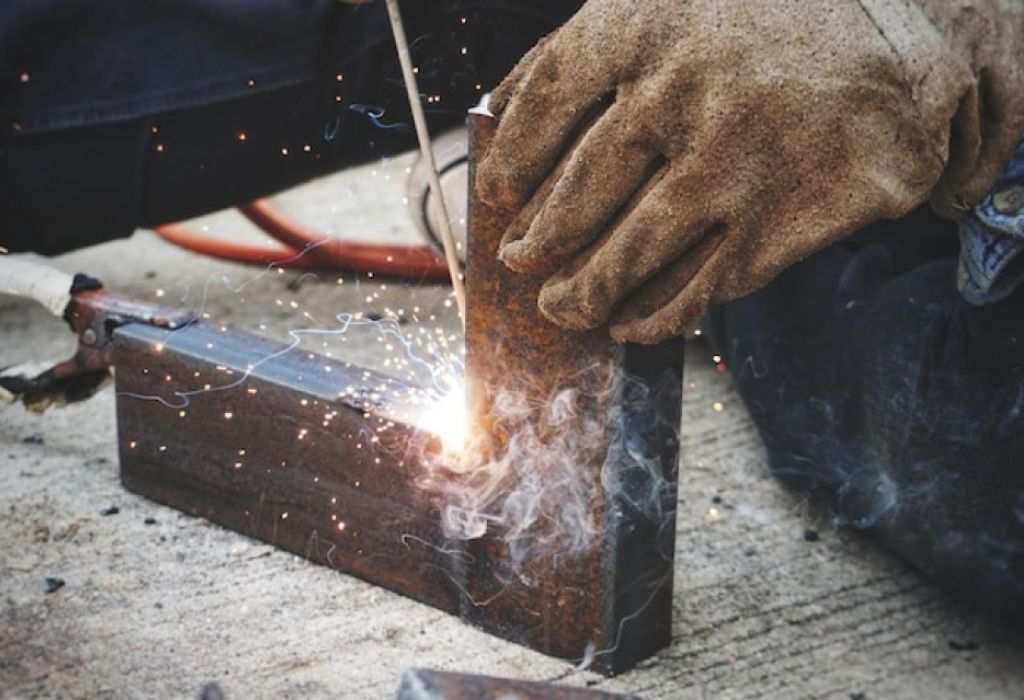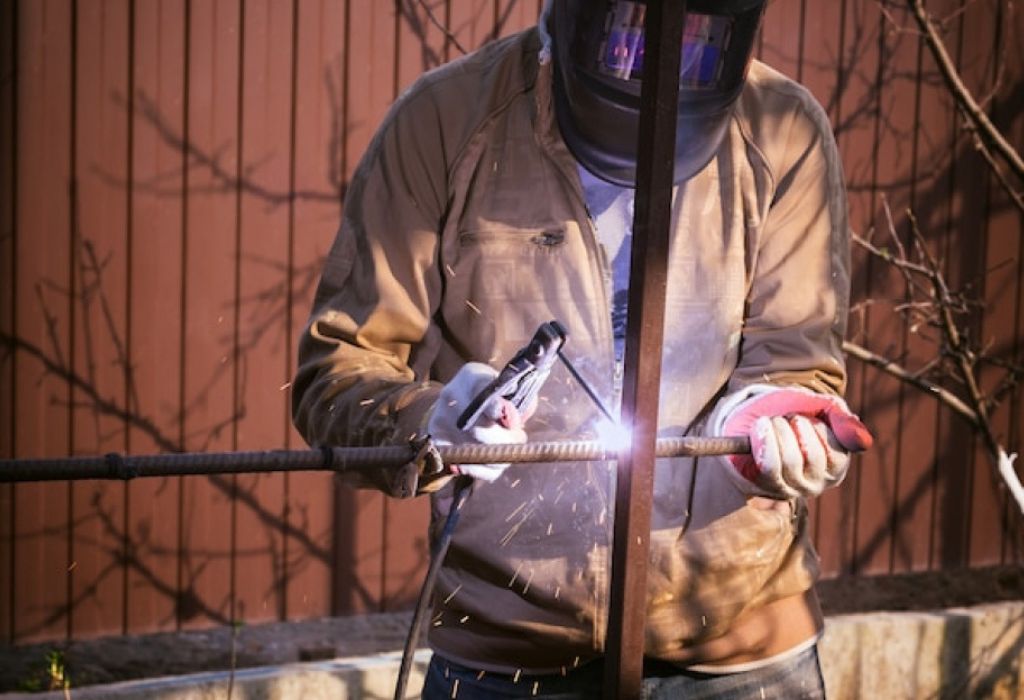A thick gray pipe rests on the workbench, its surface shimmering with graphite patterns. The welder strikes an arc, but minutes later, a sharp crack echoes through the shop.
What seemed like a simple repair turns into a frustrating puzzle. The culprit?
Ductile iron — a material known for its strength, yet feared for its brittleness under the wrong welding conditions.
Ductile iron, also called nodular or spheroidal graphite iron, is prized for toughness and flexibility compared to regular cast iron.
Yet many welders hesitate before touching it with a torch, knowing one wrong move could lead to fracture.
The challenge lies in heat control, graphite retention, and selecting filler metals that maintain the alloy’s structure.
According to Research and Markets, the global ductile iron pipe market exceeded $13 billion in 2023, driven by infrastructure growth and water-system demand.
With its wide industrial use, understanding safe welding methods is vital for field repairs and fabrication.
While welding ductile iron is possible, it demands precision. Correct preheating, slow cooling, and the right nickel-based filler can mean the difference between a strong joint and a brittle crack.
This guide explores how to weld ductile iron successfully — step by step, safely, and without damaging its unique properties.
What Makes Ductile Iron Different from Regular Cast Iron

Ductile iron contains spherical graphite nodules instead of flaky graphite found in gray cast iron. These nodules allow flexibility, reducing brittleness under load.
However, that same microstructure can be destroyed by excessive heat during welding, causing cracks once the weld cools.
What is ductile iron made of?
Mostly iron, carbon (3–3.6 %), silicon, and magnesium (to form nodular graphite).
Why is ductile iron tougher?
Spherical graphite distributes stress evenly, improving ductility.
Does it handle welding like steel?
No, the graphite phase and carbon content make it far more sensitive to heat.
Why does it crack when welded?
Rapid heating or cooling transforms graphite back into brittle carbides.
Can microstructure be restored?
Yes, through controlled preheating and post-heat treatment.
Can You Actually Weld Ductile Iron?
Yes, ductile iron can be welded — but only under strict conditions. Its success depends on technique, filler metal, and temperature management.
Is ductile iron weldable?
Yes, though not as easily as steel or mild cast iron.
Do all ductile iron grades allow welding?
Most grades (60-40-18, 65-45-12, 80-55-06) can be welded with proper care.
Is preheating mandatory?
Usually yes; 300 – 600 °F (150 – 315 °C) prevents thermal shock.
Can it be welded cold?
Only with low-heat input and short beads using nickel rods.
Is post-heat required?
Yes, to relieve stress and allow graphite re-formation.
Common Problems When Welding Ductile Iron
Without preparation, welding ductile iron leads to failure. The biggest issue is cracking during or after cooling.
Why does ductile iron crack easily?
Carbon migrates to the weld zone, forming brittle cementite.
What happens if you skip preheat?
Thermal expansion causes stress fractures near the weld.
Do wrong fillers make it worse?
Yes, incompatible fillers create hard, unmachinable zones.
Can rapid cooling cause failure?
Yes, fast cooling traps carbides and destroys ductility.
Does joint design matter?
Yes, sharp edges concentrate stress — use smooth V-grooves instead.
Choosing the Right Welding Process
Selecting the correct process determines success more than anything else. Each welding method controls heat differently.
Shielded Metal Arc Welding (SMAW)
The most common choice using nickel-based electrodes.
Gas Tungsten Arc Welding (GTAW / TIG)
Provides clean, controlled heat for smaller repairs.
Gas Metal Arc Welding (GMAW / MIG)
Possible with nickel or stainless filler but requires expert control.
Oxy-acetylene welding
Traditional method for small castings using fluxed nickel rod.
Brazing
An excellent low-heat alternative using bronze filler for crack-free joints.
Selecting the Correct Filler Metal
The filler must match the iron’s thermal expansion and composition. Nickel alloys work best because they tolerate carbon migration.
Which filler rods work best?
Ni-Fe (ENiFe-C1) and pure Ni (ENi-CI) electrodes.
Can stainless filler be used?
Yes, type 309 or 312 works for non-critical joints.
Why avoid cast-iron rods?
They produce brittle, hard welds.
What about MIG wire?
Use ERNiFe-C for ductile iron or ERNi-1 for mixed joints.
Is brazing rod acceptable?
Yes, for sealing cracks without melting the base metal.
Preheating and Cooling Procedures

Thermal control is the foundation of successful ductile-iron welding.
Why preheat before welding?
It slows temperature gradients, preventing cracking.
What temperature is ideal?
Typically 500 °F (260 °C) for small parts, 600 °F (315 °C) for thick castings.
How to monitor temperature?
Use temperature crayons or infrared thermometers.
Should cooling be fast or slow?
Always slow — wrap parts in insulation or bury in sand.
Is post-heat needed?
Yes, hold 600 °F for 30 minutes to relieve stress.
Step-by-Step Guide to Welding Ductile Iron
Proper sequence reduces risk dramatically.
1. Clean the surface — remove oil, paint, and rust with a grinder.
2. Preheat the part — use a torch or furnace for uniform heating.
3. Choose filler metal — select nickel-based electrodes or wire.
4. Weld in short passes — limit bead length to 1 inch (25 mm).
5. Peen each bead — lightly hammer to relieve stress.
6. Slow-cool — wrap or bury the part to equalize temperatures.
Can step-cooling help?
Yes, cooling gradually in 50 °F increments prevents thermal shock.
Why short beads?
They reduce local heat buildup.
Is inter-pass temperature important?
Keep below 600 °F to preserve ductility.
When grind between passes?
Always — it removes slag and reveals defects early.
Cold Welding Techniques
Cold welding avoids full preheat, using controlled heat input to minimize distortion.
Can ductile iron be cold welded safely?
Yes, with nickel rods and short, low-amperage beads.
What are the benefits?
No large-scale heating; ideal for small localized repairs.
What are the risks?
Higher residual stress if layers overlap or bead is too long.
Is peening required?
Absolutely, to relieve tension after every bead.
When to choose cold welding?
When part size or geometry prevents uniform preheat.
Brazing as a Low-Risk Alternative
Brazing melts filler, not base metal, which eliminates structural change.
Is brazing better than welding?
For non-pressure parts, yes — it avoids cracking entirely.
Which filler metals are used?
Copper-based or bronze rods with flux.
Do brazed joints hold strength?
Yes, when designed properly, they match 70 – 90 % of base-metal strength.
Can brazing seal leaks?
Yes, perfect for water or air leaks in castings.
Is post-heat required?
Usually no — brazing operates below 1,200 °F.
Post-Weld Heat Treatment
Proper stress relief ensures the weld remains ductile.
Why is post-weld heating important?
It diffuses carbon evenly, restoring toughness.
What temperature range works?
400 – 600 °F for 1 hour per inch of thickness.
Should parts be insulated afterward?
Yes, gradual cooling is essential.
Can annealing improve machinability?
Yes, it softens the heat-affected zone.
What if post-heat is skipped?
Cracks may appear days or weeks later.
Machining and Finishing After Welding
Once welded, ductile iron can still be machined smoothly if handled correctly.
Is the weld area machinable?
Yes, with nickel filler it cuts cleanly.
Should carbide tools be used?
Yes, they withstand any hard spots.
Can grinding replace machining?
For cosmetic finishing, yes.
Does surface hardness change?
Slightly higher near weld but manageable.
When to paint or coat the weld?
After cooling completely to prevent moisture entrapment.
Welding Safety Tips

Safety is critical when working with cast metals. Proper PPE and ventilation are non-negotiable.
Is fume extraction necessary?
Yes, nickel and iron fumes require strong ventilation.
Which PPE is mandatory?
Welding helmet, gloves, apron, and respirator.
Should preheated parts be handled barehanded?
Never; use insulated tools.
Can ductile-iron dust be hazardous?
Yes, wear a respirator when grinding or cutting.
Is eye protection required during peening?
Always, as tiny metal particles can fly off the bead.
Real-World Applications
Ductile iron’s weldability matters across multiple industries.
Piping systems — field repair of water and gas lines.
Automotive — fixing housings, manifolds, and brackets.
Machinery — joining bearing caps or gear casings.
Construction — repairing ductile-iron fittings on site.
Agriculture — restoring heavy-equipment castings.
Why repair instead of replace?
Cost savings up to 60 % compared with new parts source.
Modern Trends in Ductile-Iron Welding
Technology now makes the process safer and more consistent.
Are new electrodes improving results?
Yes, low-hydrogen nickel rods reduce porosity.
What about automation?
Robotic TIG systems control heat precisely for ductile materials.
Is simulation software used?
Yes, to predict stress and optimize bead placement.
Do hybrid filler metals exist?
Nickel-copper alloys offer both strength and ductility.
How does AI help?
AI-based monitoring adjusts amperage to avoid overheating.
Expert Tips to Prevent Cracking
Practical habits from experienced welders make a major difference.
Always preheat evenly. Uneven heat causes distortion.
Keep beads short. It limits heat buildup.
Use nickel filler only. It remains ductile after cooling.
Avoid air drafts. Fast cooling encourages cracks.
Let the part rest. Allow natural cooling overnight.
Can wrapping in insulation help?
Yes, it slows cooling and protects microstructure.
Does hammer peening really matter?
Yes, it relieves tensile stress at bead ends.
Should inter-pass cleaning be done?
Always, to remove slag and prevent inclusions.
What’s the best post-weld test?
Dye-penetrant inspection for surface cracks.
Conclusion
So, can you weld ductile iron without cracking it? — absolutely, but only with the right process. Ductile iron’s nodular structure can survive welding if temperature control, filler selection, and cooling are handled precisely.
The most reliable results come from nickel-based electrodes, steady preheat around 500–600 °F, and slow cooling under insulation. Avoid shortcuts, and each repair can maintain full strength without brittleness.
For critical industrial components, weld testing and controlled procedures guarantee performance comparable to new material. Done correctly, welding ductile iron isn’t risky — it’s a professional skill that blends science, patience, and precision.

I’m Darrell Julian, the founder, lead writer, and hands-on welding enthusiast behind ArcWeldingPro.com. With more than 15 years of real-world welding experience, I created this platform to share what I’ve learned in the field, in the shop, and in the heat of the arc.


